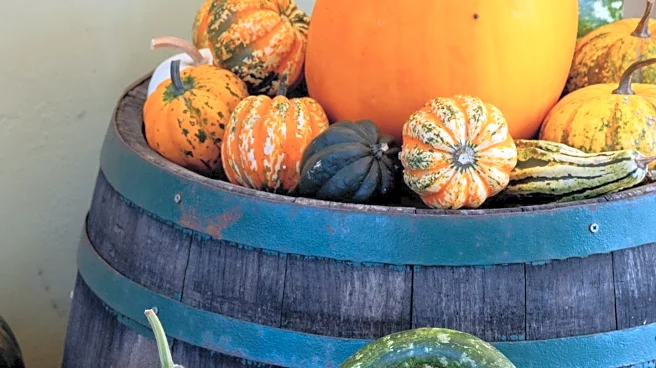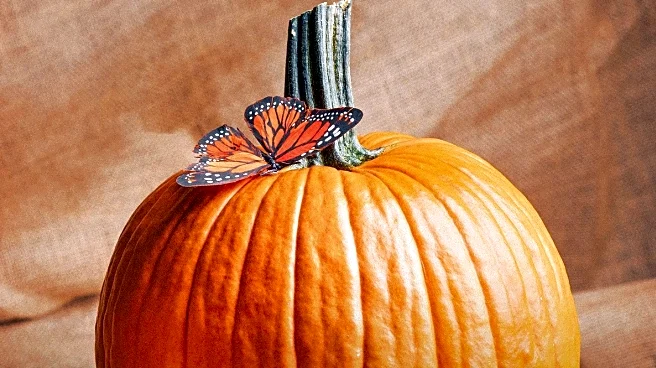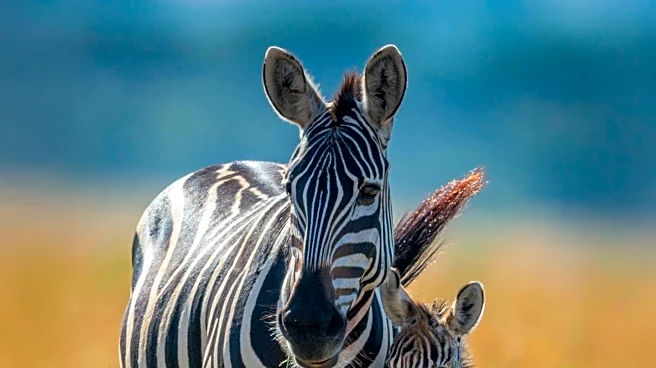What's Happening?
As Halloween approaches, many people face the challenge of protecting their decorative pumpkins from squirrels. In northern New Jersey, sisters Jackie Paszinski and Nicki Wszelaki, co-founders of Piled Pumpkins, have identified this as a common concern
among their customers. They, along with Stephanie Nucci, owner of Pumpkin City Porches in Washington D.C., offer several strategies to deter squirrels. These include selecting unblemished pumpkins, using animal repellent sprays, and applying essential oils like lavender or eucalyptus. Other methods involve using peppermint oil, cayenne pepper, and even household items like grated Irish Spring soap or petroleum jelly. Additionally, avoiding corn husks in displays and delaying pumpkin carving can help reduce squirrel attraction.
Why It's Important?
The issue of squirrels damaging pumpkins is significant for those who invest time and money into seasonal decorations. The solutions provided by experts not only help preserve the aesthetic appeal of these displays but also prevent waste. By using natural and readily available materials, individuals can protect their pumpkins without resorting to harmful chemicals. This approach aligns with environmentally friendly practices and offers a cost-effective solution. Moreover, these strategies can enhance the longevity of pumpkin displays, ensuring they remain intact throughout the Halloween season.
What's Next?
As Halloween nears, individuals are likely to implement these strategies to safeguard their pumpkins. The effectiveness of these methods may lead to broader adoption and possibly inspire new innovations in pest deterrence for seasonal decorations. Businesses like Piled Pumpkins and Pumpkin City Porches may see increased demand for their services and products as more people seek expert advice on maintaining their displays. Additionally, the success of these methods could encourage further exploration into natural pest control solutions for other types of seasonal decorations.
Beyond the Headlines
The battle between squirrels and pumpkin enthusiasts highlights a broader issue of human-wildlife interaction in urban and suburban settings. As communities continue to expand into natural habitats, finding harmonious ways to coexist with wildlife becomes increasingly important. The use of natural deterrents not only addresses immediate concerns but also promotes a more sustainable approach to managing wildlife interactions. This could lead to a shift in how people approach pest control, favoring solutions that are both effective and environmentally conscious.














